Program Value
By almost any measurement, the LDRD program contributes far more in publications, intellectual property, collaborations, and recruitment of postdoctoral researchers—dollar for dollar—than any other program at the Laboratory.
- Collaborative Explorations
- Intellectual Property
- Scientific Publications
- Early Career
- Professional Fellows
- Long-Term Impact
Collaborative Explorations
External collaborations are essential to the innovative research that takes place at LLNL, including LDRD-funded projects. By collaborating with other national laboratories, academia, and industry, our investigators can engage with experts from other institutions and access world-class experimental facilities.
The following table provides our most recent data regarding formal collaborations, which we define as LDRD-funded projects where an external collaborator received LDRD funds from LLNL. In addition, our investigators frequently participate in informal collaborations with researchers at other institutions, which often involve joint scientific publications. Both types of collaborations are a key indicator of the broad intellectual engagement that is a hallmark of LLNL’s research environment.
| Collaborations | FY19 | FY20 | FY21 | FY22 | FY23 |
|---|---|---|---|---|---|
| LDRD-funded projects with one or more formal collaborations | 74 | 78 | 88 | 79 | 81 |
| Percentage of all projects at LLNL | 30% | 32% | 33% | 32% | 30% |
New research shows successful ab initio crystal structure prediction of energetic materials
New research by Lawrence Livermore National Laboratory researchers and collaborators from Carnegie Mellon University (CMU) demonstrates that crystal structure prediction is a useful tool for studying the various ways the molecules can pack together, also known as ubiquitous polymorphism, in energetic materials. The research also shows promise of becoming an integral part of the energetic materials development pipeline.
Experimental synthesis of novel energetic materials can be a costly, time-consuming and hazardous process, sometimes requiring a significant amount of trial and error. If material properties could be predicted ahead of time, compound selection and solid form development process could be streamlined.
Predicting materials properties with a physics-based approach requires knowledge of the crystal structure. The work, featured in the Aug. 16 edition of Crystal Growth & Design by the American Chemical Society, has demonstrated that the crystal structure of commonly used energetic materials LLM-105, RDX, and HMX can be predicted using ab initio (i.e. without experimental input) crystal structure prediction methods, showing the viability and usefulness of this approach.
The work was led by Brad Steele and Anna Hiszpanski from LLNL’s Materials Science Division in collaboration with Noa Marom from the Materials Science & Engineering Department at CMU. T. Yong-Jin Han served as primary investigator. CMU Ph.D. student, Dana O’Connor, received a DOE Office of Science Graduate Student Research (SCGSR) award to conduct research at LLNL.
Steele compared crystal structure prediction to going on a long road trip and trying to pack as much stuff as possible in your car’s trunk, rearranging the stuff until the space is optimally packed.
“In our case, the ‘stuff’ are molecules, and the trunk is the unit cell — which is a ‘box’ with variable shape and size — that is repeated periodically in three dimensions to form the crystal lattice,” Steele said. “The way molecules are packed in the crystal affects key properties and performance parameters of energetic materials, such as the density and the shock sensitivity.”
Steele said the paper describes the workflow of the crystal structure prediction simulations. The algorithm is a physics-based approach that works by randomly generating crystal structures, optimizing them and ranking the resulting structures by their predicted stability.
“The work impacts the mission of the Lab because it is a new method that could be useful in the development of novel energetic materials,” said Brad Steele. “The paper demonstrates that if we have knowledge of the molecular structure of an energetic material, then we can predict its crystal structure and then a variety of other important material properties.”
LDRD Project Title: Accelerating Feedstock Optimization Using Computer Vision, Machine Learning, and Data Analysis Techniques
Principal Investigator:
T. Yong-Jin Han
LDRD Project:
19-SI-001
Intellectual Property
Year after year, projects sponsored by LDRD achieve a disproportionately large percentage of the patents and copyrights issued for LLNL research. As illustrated in the following tables, LDRD-funded work has been key in developing more than half of the Laboratory’s patents, one-third of the Laboratory’s copyrights (chiefly computer code), and more than half of the Laboratory’s records of invention.
| Patents | FY19 | FY20 | FY21 | FY22 | FY23 |
|---|---|---|---|---|---|
| All LLNL patents | 143 | 200 | 166 | 166 | 197 |
| LDRD patents | 95 | 131 | 96 | 103 | 116 |
| LDRD patents as a percentage of total | 66% | 66% | 58% | 62% | 58% |
| Copyrights | FY19 | FY20 | FY21 | FY22 | FY23 |
|---|---|---|---|---|---|
| All LLNL copyrights | 118 | 138 | 125 | 142 | 166 |
| LDRD copyrights | 24 | 31 | 42 | 47 | 44 |
| LDRD copyrights as a percentage of total | 20% | 22% | 34% | 33% | 26% |
| Records of Invention | FY19 | FY20 | FY21 | FY22 | FY23 |
|---|---|---|---|---|---|
| All LLNL records | 129 | 126 | 89 | 70 | 120 |
| LDRD records | 65 | 56 | 53 | 40 | 64 |
| LDRD records as a percentage of total | 50% | 44% | 60% | 57% | 53% |
LLNL biomedical licensee collaborating with two drug companies to advance treatments for autoimmune diseases
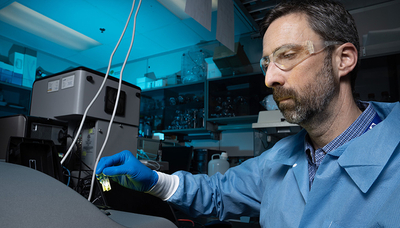
People afflicted with autoimmune diseases may someday receive help through treatments now under development by a Lawrence Livermore National Laboratory (LLNL) licensee and its collaborations with two major pharmaceutical companies.
In late 2017, LLNL licensed a biomedical technology called nanolipoprotein particles (NLPs), which can deliver vaccines and drugs inside the cells in the human body, to Ann Arbor, Michigan-based EVOQ Therapeutics.
Over the past two years, EVOQ Therapeutics has announced two major agreements with Gilead Sciences Inc. and Amgen Inc. to work on the preclinical development of novel medicines to combat autoimmune diseases. Part of the LLNL-developed NLP technology could be used as the vaccine delivery platform.
In January, Foster City, California-based Gilead Sciences and EVOQ announced they will collaborate on the preclinical development of vaccines to treat rheumatoid arthritis and lupus. The EVOQ technology is designed to enable lymph targeted delivery of disease-specific antigens for autoimmune diseases.
“The impact of LLNL’s technologies has been tremendous and we appreciate the opportunity to work alongside such a talented and dedicated organization,” said David Giljohann, EVOQ’s chief executive officer. “Our partnership with LLNL has enabled us to tackle complex challenges and may help us bring innovative solutions to patients with autoimmune diseases."
Yash Vaishnav, a business development executive in the Lab’s Innovation and Partnerships Office, who negotiated the 2017 license agreement with EVOQ Therapeutics and who continues to manage the development of the intellectual property portfolio in this area as well as industry partnerships, said the intellectual property developed with taxpayer funding by LLNL scientists is now moving toward preclinical studies for developing vaccines for several major autoimmune diseases.
“This is one of the first biomedical technologies in the areas of vaccines and therapeutics from the Department of Energy complex to enter preclinical trials,” Vaishnav said. “While there are drugs available for the treatment of autoimmune diseases, there are currently no vaccines approved by the U.S. Food & Drug Administration for the prevention or treatment of autoimmune diseases.”
Developed by LLNL biomedical researchers over a decade starting in 2005, NLPs are water-soluble molecules that are 5 to 30 billionths of a meter in size and resemble HDL particles, which are the human body’s good cholesterol. The NLPs were developed with about $7.4 million of Laboratory Directed Research and Development funds, which is internal research money.
Among the Livermore inventors on the licensed patents are LLNL biologist Nicholas Fischer, Craig Blanchette, a biophysicist now at Genentech; and former LLNL bioorganic chemist Paul Hoeprich, who has retired.
“We are very pleased that the research we conducted with the support of LLNL is now helping companies develop therapies for the millions of individuals with autoimmune diseases,” Fischer said.
LDRD Project Titles: Delivering Ribonucleic Acid Vaccines Using Nanoparticles
Principal Investigator:
Nicholas Fischer
LDRD Project:
20-ERD-004
Scientific Publications
Laboratory scientists and engineers publish more than a thousand papers each year in a wide range of peer-reviewed journals, of which LDRD-funded work accounts for a large portion. The numerous publications made possible through LDRD-sponsored research help the Laboratory maintain a strong presence in the broader scientific community, extending the impact of LDRD research beyond the DOE mission space into the wider scientific arena. In addition, the impact of these publications documenting LDRD project results extends long after articles appear in the journals, increasing the value of LDRD investments in these projects.
| Journal Articles | FY19 | FY20 | FY21 | FY22 | FY23 |
|---|---|---|---|---|---|
| All LLNL articles | 1,281 | 1,149 | 1,256 | 1,149 | 1,218 |
| LDRD articles | 553 | 428 | 509 | 490 | 495 |
| LDRD articles as a percentage of total | 43% | 37% | 41% | 43% | 41% |
LLNL chemists double down with breakthrough method to study radioactive materials

Studying radioactive materials is notoriously difficult due to their radiation-induced toxicity and risk of contamination when handling. The cost of the radioactive isotopes used in research also is a major barrier, with some costing more than $10,000 per microgram. Certain radioisotopes also cannot be produced in sufficient quantity, so it is simply impossible for researchers to study them with current laboratory techniques.
A new approach developed at Lawrence Livermore National Laboratory (LLNL) allows for the study of radioactive and/or precious elements in a much more efficient way, requiring 1,000 times less materials than previous state-of-the-art methods, without compromising the data quality.
The method and its application have recently been reported in two successive articles, one in Nature Chemistry and one in Inorganic Chemistry. The research was featured on the front cover of both journals, as well as highlighted in the journal Nature.
“This is a nice recognition that out-of-the-box ideas can, with enough work and dedication, lead to interesting breakthroughs in science, even for relatively mature research areas like radiochemistry,” said LLNL scientist and project lead Gauthier Deblonde. “The most exciting part is that this is just a beginning. Now that the proof-of-concept has been demonstrated, we will be able to move forward and apply our new method to really expand chemical knowledge on some of the most elusive and radioactive elements on Earth.”
The radiotoxicity, cost and low-availability constraints are particularly magnified for the heavy elements of the periodic table, which chemists call “actinides.” The actinides are a family of 15 radioactive elements, with the most famous ones being plutonium and uranium. Beyond plutonium, other elements include americium, curium, berkelium, californium, etc. These are the heaviest elements that can be produced on Earth and for which chemistry experiments can potentially be done. However, beyond plutonium, the availability of research isotopes drops exponentially, the elements are increasingly radioactive and the cost of producing them increases dramatically. As a result, relatively little is known about the chemical properties of these elements.
The new method involves polyoxometalate ligands (POMs), a class of molecules that has so far been largely overlooked for radiochemistry applications. The intrinsic properties of the POMs allow scientists to easily form compounds with the targeted radioisotopes, crystallize them and study them with a wide variety of spectroscopic techniques while just using a few micrograms (compared to multiple milligrams or more for previous methods). This drastically cuts costs, hastens discoveries and lowers the toxicity risk for researchers, according to Deblonde.
The new approach could be used to synthesize many new compounds containing rare isotopes, such as actinides, and study them in detail. The LLNL team plans on continuing this research to offer a new perspective on the chemistry of some of the rarest and most toxic elements on Earth, for which previous methods have remained inapplicable.
LDRD Project Title: Elusive Actinium: A First Glimpse into the Coordination Chemistry of Element 89
Principal Investigator:
Gauthier Deblonde
LDRD Project:
20-LW-017
Early Career Opportunities: Students and Postdoctoral Fellows
By funding exciting, potentially high-payoff projects at the frontiers of science, the LDRD program attracts top talent in new and emerging fields of science and technology. As shown in the following tables, LDRD investments contribute to the health and robustness of LLNL’s student and postdoctoral researcher programs.
| Students | FY19 | FY20 | FY21 | FY22 | FY23 |
|---|---|---|---|---|---|
| Students supported by LDRD | 160 | 101 | 136 | 149 | 185 |
| Percentage of all students | 23% | 18% | 24% | 23% | 24% |
| Postdoctoral Researchers | FY19 | FY20 | FY21 | FY22 | FY23 |
|---|---|---|---|---|---|
| Postdoctoral researchers supported by LDRD ≥10% of their time | 170 | 208 | 208 | 240 | 213 |
| Percentage of all postdoctoral researchers | 57% | 63% | 54% | 56% | 51% |
| LDRD postdoctoral researchers converted to full staff | 46 | 60 | 50 | 72 | 56 |
| Percentage of all conversions | 68% | 77% | 82% | 77% | 70% |
Understanding the plasticity of diamond for improved fusion ignition
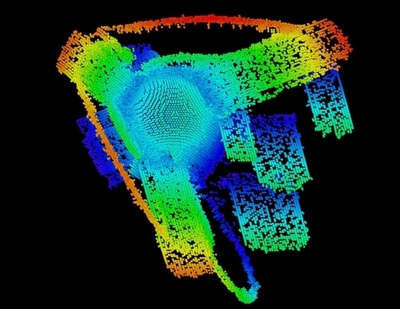
Alex Li, a Lawrence Livermore National Laboratory (LLNL) summer student in the Computational Chemistry and Materials Science Summer Institute, recently led a study published in the journal Matter to investigate the evolution of plasticity in diamond along different loading orientations and the effects that voids (pores) within the material can have on stresses within the diamond.
While diamond carbon is one of nature’s strongest naturally occurring materials, it is known to undergo irreversible plastic deformation when loaded at high rates. Rob Rudd, LLNL scientist and Li’s mentor, notes, “We usually think of diamond as brittle, strong and unyielding until it cleaves. Shocked diamond is different. Alex did a fantastic job working out the complex and unexpected details of the deformation.”
The nature of this deformation is important for high-energy-density experiments on high-energy laser systems such as the National Ignition Facility (NIF), as well as for further evolving scientific understanding of carbon-rich exoplanets. At NIF, diamond carbon is used as an ablator and capsule material for producing the extremely high pressures needed to cause nuclear fusion reactions that are being intensively investigated as a source of energy.
In many shock-compression experiments, diamond has shown little to no plastic behavior until reaching extreme pressure and temperature conditions. Because diamond exhibits strong anisotropic behavior — that is, has different properties in different locations, depending on the direction of applied stress — it can be difficult to anticipate how diamond will react under such extremes. Defects present within the diamond capsules that hold the fusion fuel can cause imperfect compression, resulting in a failure to ignite.
Using molecular dynamics and analytical calculations on three diamond orientations under shock compression, Li’s team demonstrates that both the stress needed to generate defects and the character of the defects depend on the orientation. In addition to computer simulations, the team used the Omega Laser Facility at the University of Rochester’s Laboratory of Laser Energetics to shock diamonds under extreme loading conditions and recover them for subsequent microscopic analysis. Omega’s high laser energy enabled the imposition of the extreme stress- and strain-rate conditions. Stress refers to the force applied to a material per unit area, while strain refers to the deformation or change in the material’s shape resulting from the applied force.
Out of the three orientations that were tested, two showed significantly more defect activity, with even more defects being generated when a void was intentionally introduced. Building a better understanding of diamond’s behavior under shock loading can help researchers optimize the diamond capsules used at NIF, thereby suppressing undesired effects such as instabilities and leading to the development of better models or capsules to get closer to realizing fusion as an energy source.
LDRD Project Title: Investigating the Relationship Between Microstructure and Dynamic Response Using X-Ray Free-Electron Lasers
Principal Investigator:
Jon Eggert
LDRD Project:
21-ERD-032
Professional Fellows

One relevant indicator of advancement and leadership in a scientific field is the election of individuals as fellows of professional societies. This indicator reflects success for both the individual researcher and the Laboratory as a whole.
American Physical Society (APS) fellowships are awarded based on scientific merit and impact over an extended period, and the evaluation process relies on nomination and recommendation by peers. As such, data regarding the history of APS fellowships awarded to LLNL physicists provide an important indicator regarding the key role that the LDRD Program plays in developing the technical, scientific, and leadership skills of early career staff. As presented in the following table, for fiscal year 2023, 100% of the new APS Fellows from LLNL have early career LDRD experience.
Because the quantity of awards each year is a small number, we also present multi-year statistics. For example, over the last 20 years, more than 90% of the APS Fellows at LLNL had early career LDRD experience.
| Single-Year Statistics | Multi-Year Statistics | |||||
|---|---|---|---|---|---|---|
| History of APS Fellows at LLNL | FY21 | FY22 | FY23 | FY14–18 (5 yrs) |
FY19–23 (5 yrs) |
FY14–23 (10 yrs) |
| Total APS awards | 3 | 2 | 2 | 28 | 17 | 45 |
| Awards with LDRD roots | 3 | 2 | 2 | 27 | 16 | 43 |
| % with LDRD roots | 100% | 100% | 100% | 96% | 94% | 96% |
| Average years from first LDRD experience | 4.7 | 15 | 15.5 | 15.6 | 14.8 | 15.3 |

Tracing impact to LDRD roots
Throughout this section, we mention “LDRD roots.” Much discussion with principal investigators has transpired about what it means for an accomplishment to have LDRD roots. A simple case would be if an idea for an invention arises during an LDRD project and work on the invention is completed during the period of LDRD investment. But R&D often does not advance on such a short timescale. In general, an accomplishment (invention, paper, capability, etc.) is determined to have LDRD roots if at least one LDRD project needed to occur for the accomplishment to take place. In other words, if one can identify an LDRD project that was critical to the accomplishment, then it is considered to have LDRD roots.
2023 APS Fellows at LLNL
Two LLNL scientists selected as 2023 American Physical Society fellows
Lawrence Livermore National Laboratory (LLNL) scientists Manyalibo “Ibo” Matthews and Frank Graziani have been named 2023 American Physical Society (APS) fellows.
Matthews was selected from the Forum in Industrial and Applied Physics unit “for pioneering research in optimizing metal 3D printing and laser materials processing.”
Frank Graziani was chosen from the Division of Plasma Physics unit, “for original theoretical and computational contributions on the frontiers of fundamental properties of non-ideal plasmas, and for exceptional leadership in the national boost initiative, including mentoring and educating the broader high energy density physics community.”
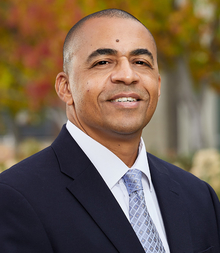
Ibo Matthews
““I am truly humbled and honored to be named an APS Fellow, and I’m very grateful for all the support I’ve received from LLNL and my colleagues.”
As a 17-year Lab veteran, Matthews started his career in industrial research at Bell Laboratories where he worked for eight years in photonic materials research. He is a trained experimental condensed matter physicist and currently serves as the division leader for Materials Science within the Physical and Life Sciences Directorate.
Matthews’ work over the years has largely focused on light-matter interactions and has included light scattering and absorption spectroscopy to characterize material properties as well as processing of materials using intense and/or high average power laser light. A large part of his research at LLNL occurred in the NIF & Photon Science Directorate where he studied problems related to laser damage, laser materials processing and directed energy weapon systems. That work in laser materials processing eventually branched out to include studies to understand the physics of laser-based 3D printing of metals and other activities across the Lab’s programs.
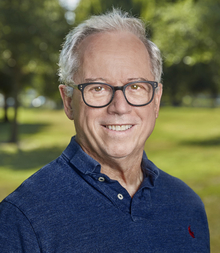
Frank Graziani
“I fell in love with the field. It is extremely challenging, but it holds so much promise for the future."
Graziani has had an evolving career during his 34 years at the Lab. He started off interested in the fundamental understanding of burn physics and finding a better way to validate physics models used in radiation-hydrodynamics codes. He then became interested in non-ideal plasmas or warm dense matter. Five years ago, he looked into quantum computing and never looked back.
“Being named a fellow of the American Physical Society was a tremendous honor,” he said. “This honor is a testimony to all of the brilliant students, postdocs and scientists who I have worked with over my 34 years at LLNL. Science, especially the type of big science we do at the national laboratories, is a community affair. In pursuing the science I am passionate about; I am fortunate enough to have a network of colleagues around the world who I also count as my friends.”
Graziani now serves as the director of the High Energy Density (HED) Science Center at LLNL where he helps provide the international HEDS community with a wide variety of classes ranging from plasma diagnostics to spectroscopy to an overview of HEDS. The center hires about a dozen summer interns every year, and Graziani has even mentored some of them.
Long-Term Impact
The LDRD program is an investment in our nation’s future, ensuring mission support that is often realized many years after an LDRD-funded project concludes. Recognizing this long-term impact of the LDRD program, we believe it is important to highlight indicators that span multiple years, demonstrating the true impact of LDRD as a national asset.
We collaborated with our colleagues from LDRD programs at other NNSA institutions to identify ways that we could best represent the long- term impact of LDRD investments. As each institution issues its LDRD program report for fiscal year 2023, we present a common set of long-term performance indicators including the content provided below.
Distinguished Member of the Technical Staff
One relevant indicator of career advancement in a science and technology field is the recognition of individuals as distinguished members of the technical staff at the institution. Individuals who receive this recognition are identified as being in the top 1% or 2% of the institution’s scientific and technical staff, similar to a lifetime achievement award, or in this case, for their contribution to the Laboratory’s mission.
At LLNL, appointment as a Distinguished Member of the Technical Staff (DMTS) is reserved for Laboratory scientists and engineers who have demonstrated a sustained history of high-level achievements in programs of importance to the Laboratory, become a recognized authority in the field, or made a fundamental and important discovery that has sustained, widespread impact.
As presented in the following table, a vast majority of these distinguished staff at LLNL had early career experience with LDRD projects, which helped them develop their scientific, technical, and leadership skills.
| Single-Year Statistics | Multi-Year Statistics | |||||
|---|---|---|---|---|---|---|
| History of DMTS Awards at LLNL | FY21 | FY22 | FY23 | FY14–18 (5 yrs) |
FY19–23 (5 yrs) |
FY14–23 (10 yrs) |
| Total DMTS awards | 0 | 26 | 0 | 19 | 32 | 51 |
| DMTS with LDRD roots | N/A | 20 | N/A | 17 | 26 | 43 |
| % with LDRD roots | N/A | 77% | N/A | 89% | 81% | 84% |
| Average years from first LDRD experience | N/A | 16.4 | N/A | 21.5 | 16.7 | 18.6 |
R&D 100 Awards
Another indicator of advancement and leadership in a scientific field is the R&D 100 Award program, which honors the top innovations of the past year. R&D 100 Awards can occur a long time after the initial ideas are developed, often during LDRD projects. Typically, it takes 5 to 10 years (or longer) from concept development to receiving an award, including the time needed to move through patenting an invention and demonstrating its commercial applications.
The LDRD program is an investment in our nation’s future, ensuring mission support that is often realized many years after an LDRD-funded project concludes. Recognizing the is long-term impact of the LDRD program, we believe it is important to highlight indicators that span multiple years, demonstrating the true impact of LDRD as a national asset.
| Single-Year Statistics | Multi-Year Statistics | |||||
|---|---|---|---|---|---|---|
| History of R&D 100 Awards at LLNL | FY21 | FY22 | FY23 | FY14–18 (5 yrs) |
FY19–23 (5 yrs) |
FY14–23 (10 yrs) |
| Total R&D 100 Awards | 3 | 3 | 3 | 17 | 14 | 31 |
| Awards with LDRD roots | 0 | 2 | 3 | 6 | 7 | 13 |
| % with LDRD roots | 0% | 67% | 100% | 35% | 50% | 42% |
| Average years from 1st LDRD experience | N/A | 7.5 | 14.7 | 7.5 | 11.9 | 9.8 |
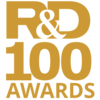
The renowned R&D 100 competition, now in its 61st year, received entries from 15 countries and regions around the world.
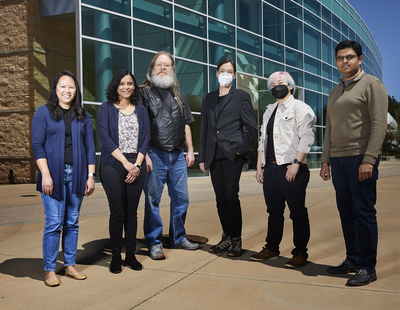
Lab scientists and engineers garner three awards for top inventions in the R&D 100 competition
Lawrence Livermore National Laboratory (LLNL) scientists and engineers have netted three awards among the top 100 inventions worldwide.
The trade journal R&D World Magazine recently announced the winners of the awards, often called the “Oscars of innovation,” recognizing new commercial products, technologies and materials that are available for sale or license for their technological significance.
With this year’s results, the Laboratory has now collected a total of 179 R&D 100 awards since 1978.
This year’s LLNL R&D 100 awards include a software suite that helps apply deep-learning techniques to major science and data challenges in cancer research; software that helps better understand the power, energy and performance of supercomputers; and a number format that permits fast, accurate data compression for modern supercomputer applications.
All three of LLNL’s R&D 100 award winners received internal “seed money” from the Laboratory Directed Research and Development program. This funding enables the undertaking of high-risk, potentially high-payoff projects at the forefront of science and technology.
“The R&D 100 awards highlight the most game-changing technologies each year,” Lab Director Kim Budil said. “Researchers at LLNL strive to address the most significant challenges facing the world today through innovative science and technology and these awards are an important recognition of the impact of this work.”
Software aids scientific discovery
A team of LLNL computer scientists has developed Variorum, a vendor-neutral software library for exposing and monitoring the power, energy and performance of low-level hardware dials across diverse architectures in a user-friendly manner for supercomputers.
It is part of the Department of Energy’s (DOE) Exascale Computing Project (ECP), specifically the Argo Project in which Variorum is a key component for node-level power management in the high-performance computing (HPC) PowerStack Initiative.
Variorum focuses on ease of use and reduced integration burden in scientific applications and workflows. It has enabled support for all three upcoming U.S. exascale supercomputers — El Capitan at LLNL, Aurora at Argonne National Laboratory and Frontier at Oak Ridge National Laboratory — and many other HPC systems. The Variorum team is led by Lab computer scientist Tapasya Patki and includes computer scientists Aniruddha Marathe, Barry Rountree, Eric Green, Kathleen Shoga and Stephanie Brink.
Accelerating data movement for supercomputers
A team of LLNL researchers has developed ZFP, an open-source software that compresses numerical data exceptionally fast and allows reductions in data movement, something that is critical to today’s high-performance computing (HPC) applications. HPC performance is largely limited by data movement rather than raw compute power.
ZFP allows computer users to store numerical data using less space, so that they can cram larger data sets into memory or reduce how much disk space they need. ZFP also allows users to transfer data, such as between memory and disk, between different compute nodes on a supercomputer and across the internet, more quickly by having the sender compress it, transmit the data in reduced form and have the receiver decompress it in order to reconstruct the original data.
ZFP effectively expands available central processing unit and graphics processing unit memory by as much as 10-fold; reduces offline storage by10-fold to 100-fold; and — by reducing data volumes — speeds up data movement.
Contrary to competing compressed formats designed for file storage, a unique feature of ZFP is that it supports high-speed random access to array elements — both for read and write operations — suitable also for in-memory storage.
ZFP was developed by a team of LLNL researchers led by computer scientist Peter Lindstrom and includes computer scientists Danielle Asher and Mark C. Miller. In addition, three former Lab employees — Stephen Herbein, Matthew Larsen and Markus Salasoo — who have since left LLNL were part of the team.
CANDLE aids cancer patients
The ECP-CANDLE Project (Exascale Computing Project — CANcer Distributed Learning Environment) brought together the combined resources of the DOE and the National Cancer Institute to accelerate cancer-specific research by applying machine learning and deep learning techniques to large-scale cancer datasets in a distributed computing environment.
The resultant software suite, called CANDLE, provides cancer researchers with key functions and capabilities so they can study molecular interactions using dynamic simulations and predict responses to treatment as well as patient trajectories and outcomes.
As part of the five-lab consortium, this work led to a specific focus for the LLNL team within CANDLE on the development of scalable distributed deep learning tools, algorithms and methods within the open-source Livermore Big Artificial Neural Network toolkit (LBANN) and targeting the development of neural network models representing the state transition of the RAS-RAF protein complex as it binds to a lipid membrane.
Several of the key innovations developed by the LLNL research team were the creation of a scalable deep learning tournament algorithm, scalable distributed in-memory data storage optimized for deep neural network training, improved methods for tensor and model parallelism, as well as the capability for dynamic tuning of compute kernels that are optimized for next generation HPC hardware architectures.
Additionally, the CANDLE project and LLNL team worked to enable external deep learning toolkits, such as PyTorch, DeepSpeed, and Megatron-LM, to run on the first generation of exascale computers as well as help optimize their performance on these systems.
The CANDLE collaborators are Argonne, Oak Ridge, Lawrence Livermore and Los Alamos national laboratories as well as Fredrick National Laboratory for Cancer Research.
The LLNL part of the ECP-CANDLE team is led by Lab computer scientist Brian Van Essen and chief computational scientist Fred Streitz and includes current team members Tom Benson, Adam Moody, Tal Ben-Nun, Nikoli Dryden, and Pier Fiedorowicz as well as former Lab employees David Hysom, Sam Ade Jacobs, Naoya Maruyama and Tim Moon.
LDRD’s Long-Term Program Impact
As part of the Lawrence Livermore National Laboratory (LLNL) LDRD Annual Report, each year we will include a chart showcasing the long-term impact of LDRD on a LLNL program. This year, we highlight the National Atmospheric Release and Advisory Center (NARAC). For several decades, the LDRD program at LLNL has funded technical support to respond to nuclear, radiological, chemical, biological, and hazardous natural materials released into the atmosphere in the United States and around the world. Resources include emergency planning, real-time assessment, emergency response, and detailed studies of atmospheric releases at the National Atmospheric Release Advisory Center (NARAC), a national support center. LDRD support has improved the fundamental science of the NARAC modeling and analysis system which has improved the speed and accuracy of national and international responses to atmospheric releases providing enhanced national security.









